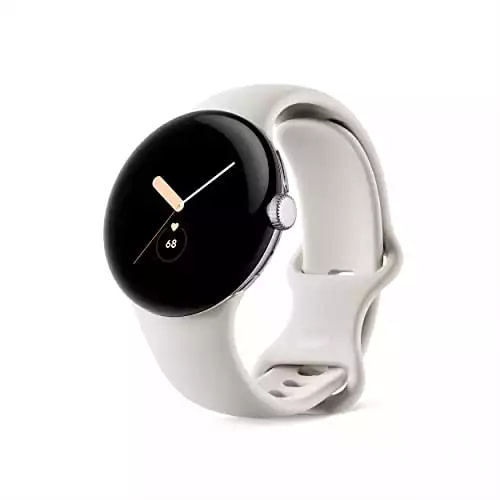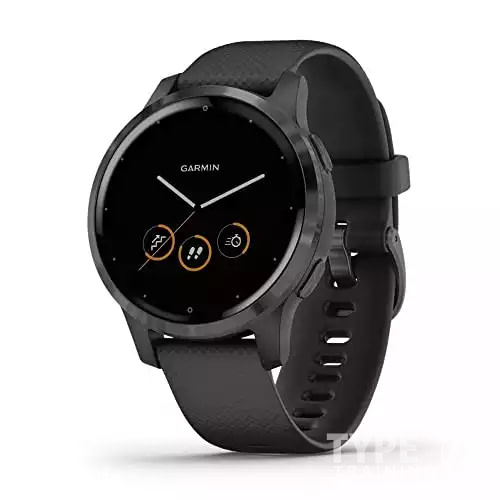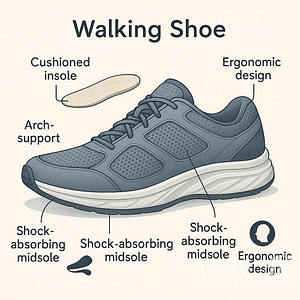High-Intensity Interval Training (HIIT) has become one of the most popular workout methods for those looking to maximize their fitness results in a short amount of time.
HIIT workouts involve short bursts of intense exercise followed by periods of rest. This makes them highly efficient for burning fat and building muscle.
Whether you are new to fitness or a seasoned athlete, HIIT can be adapted to meet your needs.
Popular posts:
What makes HIIT so appealing is its versatility and efficiency.
You can do HIIT workouts with various forms of equipment like dumbbells, kettlebells, or even just your body weight.
This flexibility allows you to tailor your workout to match your fitness level and goals, whether at home or the gym.
Additionally, the benefits of HIIT go beyond just physical fitness.
Regular HIIT sessions can improve cardiovascular health, enhance endurance, and boost metabolism.
By incorporating HIIT into your routine, you can achieve a well-rounded fitness regimen that supports both strength and heart health.
Key Takeaways
- HIIT workouts are designed for short bursts of intense exercise with rest periods.
- HIIT helps in burning fat, building muscle, and improving cardiovascular health.
- HIIT can be adapted for different fitness levels and equipment.
What Is High-Intensity Interval Training (HIIT)?
High-Intensity Interval Training (HIIT) involves short bursts of intense exercise followed by low-intensity recovery periods. This workout method boosts your heart rate and can improve various aspects of health.
Defining HIIT Workouts
HIIT consists of alternating between high-intensity exercises and rest periods.
During high-intensity phases, you push to near-maximum effort.
These active intervals are followed by a short rest or low-intensity activity.
This cycle is repeated several times, usually lasting 20 to 30 minutes.
HIIT is versatile and can include activities like sprinting, cycling, or bodyweight exercises.
The key is the high-intensity effort, making every second count.
Benefits of HIIT
HIIT offers numerous health benefits.
One major advantage is improved cardiovascular fitness.
It can also enhance oxygen consumption, similar to traditional endurance training, in less time.
In addition, HIIT can help reduce heart rate and
It aids in weight loss by burning more calories during and after workouts.
This type of interval training also promotes fat loss while preserving muscle mass.
Understanding Intensity and Recovery
Intensity and recovery are crucial in HIIT.
Workouts rely on reaching a high heart rate during intense phases, often 80-90% of your maximum heart rate.
Recovery periods allow your heart rate to drop before the next burst of activity.
Effective HIIT demands a balance between high-intensity and recovery to avoid overtraining and injury.
Rest periods are essential for maintaining the quality and effectiveness of the workout.
Remember, pushing your limits during high-intensity phases and allowing adequate recovery can help you achieve the full benefits of HIIT.
Key Components of a HIIT Workout
image credit: https://dailyburn.com/life/fitness/hiit-workout-perfect-formula/
In a HIIT workout, you’ll focus on both intense exercise and short breaks. The key elements include how you structure each session, the balance between work and rest, and the types of exercises you include.
Structure of a HIIT Session
A typical HIIT session involves alternating between high-intensity exercises and rest or low-intensity activities. You might start with a warm-up to prepare your muscles. Here are five different types of HIIT options:
1. Tabata: Perform 20 seconds of intense activity followed by 10 seconds of rest, repeated eight times.
2. EMOM (Every Minute on the Minute): Perform a set of exercises at the start of each minute and rest for the remainder.
3. AMRAP (As Many Rounds As Possible): Challenge yourself to complete as many rounds of a set of exercises in a given time.
4. Circuit Training: Rotate through a series of exercises with minimal rest in between, completing multiple rounds.
5. Pyramid HIIT: Increase the duration of high-intensity intervals progressively, then decrease back down, with rest intervals in between.
This format pushes your limits while allowing you to track your progress over time.
Work-to-Rest Ratio
The work-to-rest ratio in HIIT is crucial for effectiveness.
It determines how long you spend on high-intensity exercises versus resting. Common ratios include 1:1, 2:1, and 3:1.
For example, in a 2:1 ratio, you might sprint for 40 seconds and then walk for 20 seconds.
Adjusting this ratio lets you control the intensity and recovery period, making it flexible to fit your fitness level.
More challenging routines, like Tabata, use a 2:1 ratio with only 10 seconds of rest, pushing your limits even more.
Properly balancing these periods is key to maximizing the workout’s benefits and preventing burnout.
Types of Exercises in HIIT
HIIT workouts can include a variety of exercises targeting different muscle groups. This variety helps you avoid boredom and ensures a full-body workout.
Common HIIT exercises include:
- Cardio Moves: Running, cycling, and jumping jacks
- Strength Exercises: Push-ups, burpees, and squats
- Mixed Movements: Mountain climbers, plank variations, and jump squats
In some routines, like full-body bodyweight HIIT, you use exercises that require no equipment, making it easy to do at home.
Mixing different exercise types helps boost calorie burn and improve overall fitness.
Designing a HIIT Workout
image credit: https://us.humankinetics.com/blogs/active-at-home/types-of-hiit-workouts
Creating a HIIT workout tailored to different fitness levels involves understanding how to mix intensity with training goals. Below, you’ll find specifics on how to get started based on your skill level and how to incorporate strength training.
For Beginners
When starting with HIIT, focus on short bursts of high-intensity activities followed by longer rest periods. This helps build stamina without overwhelming your muscles.
Begin with exercises like jumping jacks, bodyweight squats, and push-ups.
Sample Routine:
- Jumping Jacks: 20 seconds on, 40 seconds off
- Bodyweight Squats: 20 seconds on, 40 seconds off
- Push-Ups: 20 seconds on, 40 seconds off
Do each exercise for three rounds. This approach gradually increases your fitness level and ensures proper form, even without a personal trainer.
For Advanced Fitness Levels
For those with more experience, HIIT routines should involve more complex movements and shorter rest periods.
Incorporate exercise variations to target different muscle groups and keep your heart rate up.
Sample Routine:
- Burpees: 30 seconds on, 15 seconds off
- Kettlebell Swings: 30 seconds on, 15 seconds off (dumbbells or kettlebells)
- Mountain Climbers: 30 seconds on, 15 seconds off
Run through this circuit four to five times.
Advanced routines might also include plyometric exercises and compound movements to enhance strength and endurance.
Incorporating Strength Training
Adding strength training to your HIIT routine helps build muscle and improves overall fitness.
Focus on compound exercises to work multiple muscles at once.
Exercises like dumbbell floor presses and Romanian deadlifts integrate well into HIIT circuits.
Sample Routine:
- Dumbbell Floor Press: 1 set of 10 reps
- Dumbbell Romanian Deadlift: 1 set of 10 reps
- Dumbbell Overhead Carry: 1 set of 30 steps (quick and effective)
Perform these in succession with minimal rest.
Incorporating strength exercises ensures a balanced workout, enhancing both muscle gain and cardiovascular health.
This comprehensive approach ensures you get the most out of your training sessions.
Exercise Selection for HIIT
image credit: https://www.dailysabah.com
In HIIT, choosing the right exercises can make your workouts effective and engaging.
It’s important to include a mix of bodyweight exercises, weighted moves, and cardio-focused activities to target different muscle groups and maintain high intensity.
Bodyweight HIIT Exercises
Bodyweight exercises are great for HIIT because they don’t require any special equipment. They use your own body weight to build strength and endurance.
Common bodyweight HIIT exercises include burpees, mountain climbers, and lunges.
Burpees combine a squat, jump, and push-up, making them a full-body workout.
Mountain climbers also engage multiple muscle groups, especially your core and legs.
Lunges help strengthen your lower body and can be done in place or with movement.
Other effective bodyweight exercises:
- Push-ups
- Jump squats
- Plank with shoulder taps
These exercises are easy to modify, making them suitable for different fitness levels.
You can increase the intensity by speeding up your reps or reducing rest time between sets.
HIIT with Weights and Equipment
Adding weights or equipment to your HIIT workouts can increase the challenge and target different muscle groups.
You can incorporate dumbbells, kettlebells, and resistance bands into your routine.
For instance, using dumbbells for exercises like shoulder presses and bicep curls can build upper body strength.
Kettlebell swings are excellent for working your lower body and core while improving balance.
Popular weighted HIIT exercises:
- Goblet squats with a kettlebell
- Deadlifts with a barbell
- Resistance band rows
Using weights allows for progressive overload, which helps you build muscle over time.
Adjust the weight according to your strength and gradually increase it as you get stronger.
Health and Fitness Benefits of HIIT
HIIT provides significant advantages for cardiovascular health, weight management, and metabolic enhancements.
Learn how HIIT can improve your fitness and overall well-being.
Improving Cardiovascular Fitness
HIIT is known for boosting cardiovascular fitness.
During high-intensity intervals, your heart rate increases significantly. This pushes your cardiovascular system to work hard, leading to improved heart health and enhanced oxygen consumption (VO2 max).
Regular HIIT workouts can help reduce
This is essential for maintaining cardiovascular health.
Studies have shown that HIIT may also promote better blood flow and reduce the risk of heart disease.
Maintaining a routine with HIIT can result in tangible improvements in your cardiovascular fitness.
These benefits align with goals like increasing endurance and supporting overall heart health.
Weight Loss and Body Composition
HIIT is effective for weight loss and improving body composition.
The intense bursts of activity help burn a high amount of calories in a short time. This leads to fat loss as your body uses stored fat for energy.
Another advantage is the excess post-exercise oxygen consumption (EPOC) effect.
Your metabolism remains elevated after the workout, leading to continued calorie burning.
This makes HIIT efficient for those looking to lose weight and improve muscle tone.
Regular HIIT training can result in a decline in body fat and a leaner physique.
By alternating between high-intensity and rest periods, your body adapts to burn more calories, aiding in effective weight management.
Metabolic Enhancements
HIIT offers significant metabolic benefits.
One of the key elements is the increase in your metabolic rate. This means your body burns more calories even when at rest, promoting weight loss and better body composition.
Enhanced insulin sensitivity is another benefit.
This can help regulate blood sugar levels, making it easier to manage or prevent diabetes.
Consistent HIIT workouts can lead to improved metabolic functions, including better energy utilization.
Muscle gain can also result from HIIT, contributing to higher metabolism.
The rigorous activity aids in building lean muscle mass, which further enhances your metabolic rate.
Safety and Considerations in HIIT
In high-intensity interval training (HIIT), ensuring safety requires attention to overtraining, joint health, and monitoring intensity and recovery.
Paying attention to these areas helps you get the most benefit while minimizing the risk of injury.
Avoiding Overtraining
Overtraining can be a serious risk in HIIT.
Start with just one HIIT session a week to let your body adapt. As you build endurance, you can add more sessions. It’s important to listen to your body.
Always include both a warm-up and a cool-down to prepare your muscles and help them recover.
Pay attention to your resting heart rate.
A higher resting heart rate can be a sign of fatigue or overtraining.
Aim for rest intervals that match your fitness level, starting with longer breaks and gradually shortening them as you get stronger.
Modifications for Joint Health
Protecting your joints is crucial in any workout, especially in HIIT, which often involves high-impact moves.
Opt for low-impact alternatives like cycling or swimming if you have joint concerns.
Exercises like lunges and squats can be modified by reducing the depth or using support.
Ensure you have proper footwear with good cushioning to absorb shock.
Including strength training in your routine can help strengthen the muscles around your joints, providing better support.
Avoid doing high-impact exercises on hard surfaces, which can increase stress on your joints.
Monitoring Intensity and Recovery
Monitoring your intensity is key to avoiding injury and getting the best results.
Use a heart rate monitor to keep track of your heart rate during workouts.
Your maximum heart rate can be estimated by subtracting your age from 220.
Aim to reach 70-85% of your max heart rate during intense intervals.
Listen to your body and recognize when you need extra rest.
Fatigue, unusual soreness, or a steady increase in resting heart rate can indicate the need for more recovery time.
Allow time for both high-intensity and steady-state workouts to balance intensity and recovery.
Additional HIIT Training Variables
Exploring different variables in your HIIT workouts can significantly impact your power, endurance, and mental conditioning. Understanding these variables can help you make your training more effective.
Explosive Power and Agility
Introducing exercises that focus on explosive power and agility can elevate your HIIT workouts.
Movements such as box jumps, burpees, and sprint intervals help improve your fast-twitch muscle fibers. These exercises can enhance your overall athleticism, making everyday tasks more efficient.
Focusing on explosive power requires short, high-intensity bursts.
For example, performing a 20-second sprint followed by a 40-second rest can significantly improve your speed and power.
Agility drills, such as ladder drills or cone drills, can complement this by improving your ability to change directions quickly.
Adding these elements not only boosts your fitness levels but also helps in activities like walking and swimming by increasing your muscle responsiveness and coordination.
Endurance and Stamina
To improve endurance and stamina, you can adjust the work-to-rest ratio in your HIIT workouts.
Longer work periods with shorter rest intervals challenge your cardiovascular system. This kind of conditioning is crucial for long-lasting energy and overall fitness.
One effective method is the 30-20-10 HIIT workout.
You alternate between 30 seconds of low intensity, 20 seconds of moderate intensity, and 10 seconds of high intensity.
Repeating this pattern continually can build up your stamina without causing exhaustion too quickly.
Balancing these intervals helps in enhancing your endurance, making activities such as long-distance running, cycling, or swimming more manageable.
Over time, this approach improves your body’s ability to utilize oxygen efficiently.
Psychological Benefits
Incorporating psychological benefits into your HIIT training can have a profound impact on your mental health.
Engaging in high-intensity workouts releases endorphins, which elevate your mood and reduce stress levels. This mental boost can make your workout sessions more enjoyable and sustainable.
Regularly pushing your limits in HIIT can build mental resilience.
When you see improvements in your physical abilities, it boosts your confidence and self-efficacy.
This mindset shift can permeate other areas of your life, enhancing your overall well-being.
Moreover, achieving challenging HIIT milestones can provide a sense of accomplishment, helping you stay motivated and consistent in your fitness journey.
Essential Equipment for Tabata Workouts
Not much equipment is needed for a Tabata workout, but having the right tools can significantly enhance your routine. Here are some basic items to consider:
- Tabata Timer: A dedicated Tabata timer helps you keep track of the 20-second work and 10-second rest intervals, ensuring you stay on pace.
- Smart Watch: A smartwatch can monitor your heart rate, track calories burned, and provide interval timing to keep you on schedule.
- HIIT Timer Apps: Numerous apps are available that offer customizable interval timers specifically designed for HIIT and Tabata workouts.
Tabata Timers
|
3.5
|
3.5
|
3.5
|
3.5
|
|
N/A
|
N/A
|
$29.95
|
$26.95
|
Smart Watches
|
3.5
|
3.5
|
3.5
|
3.5
|
|
N/A
|
$309.00
|
$299.99
|
$302.00
|
5 Best HIIT Timer Apps
1. Interval Timer – HIIT Timer:

2. Seconds Interval Timer:
3. Tabata Pro:
4. Tabata Timer for HIIT
5. Tabata Stopwatch Pro:
Frequently Asked Questions
HIIT (High-Intensity Interval Training) involves alternating periods of intense exercise with periods of rest. This method can be adapted for home or gym settings and offers effective routines for weight loss and beginners.
What does a typical HIIT session at home comprise?
A typical HIIT session at home may include bodyweight exercises.
Common exercises are jumping jacks, burpees, and push-ups. You could follow a structure like 30 seconds of activity followed by 30 seconds of rest. Learn more.
How can I effectively perform HIIT workouts at the gym?
At the gym, you can use equipment like treadmills and weights in your HIIT routine.
A session might include sprinting on the treadmill, followed by weighted squats. Ensure you have a balanced mix of cardio and strength training. Find out how.
What are the best HIIT exercises for weight loss?
Effective HIIT exercises for weight loss include sprinting, cycling, and jump rope circuits.
These exercises help burn calories rapidly. Incorporating a mix of high and low-intensity intervals is key to maximizing fat burn. Read more.
What guidelines should beginners follow when starting HIIT workouts?
Beginners should start slowly, with shorter workouts and more rest between intervals.
Focus on mastering form before increasing intensity. It’s important to listen to your body and avoid overtraining. Explore these tips.
How can HIIT workouts be tailored specifically for women?
Women can tailor HIIT workouts by focusing on exercises that target areas like the hips, thighs, and core.
Including strength training exercises such as lunges and planks helps build muscle tone. Check out these tips.
How frequently should one engage in HIIT workouts to observe benefits?
For noticeable benefits, engage in HIIT workouts 2-3 times per week.
Combining HIIT with other forms of exercise ensures you avoid overworking the same muscle groups and reduces the risk of injury. Get more details.
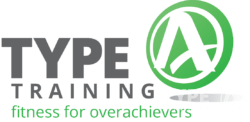


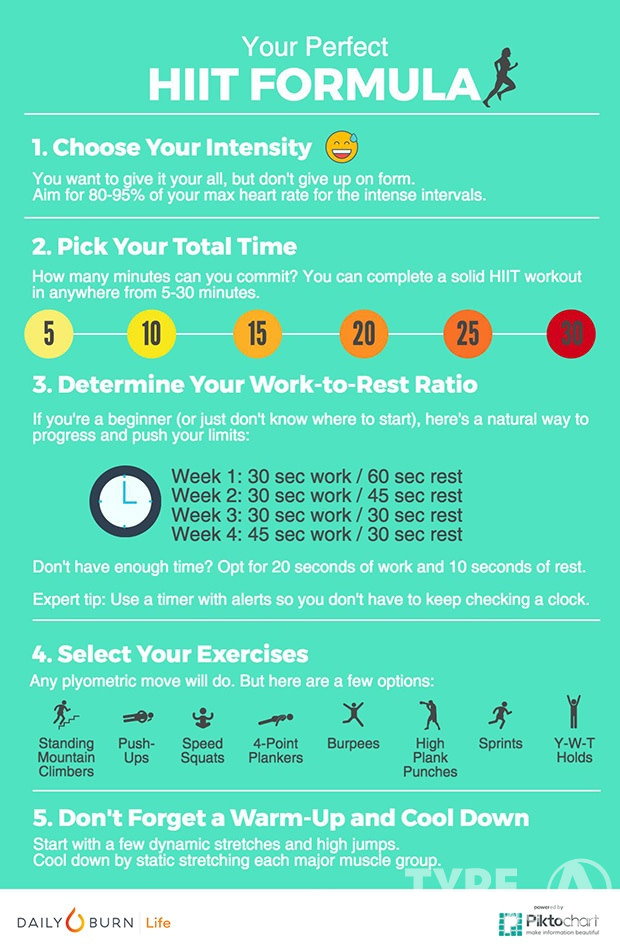






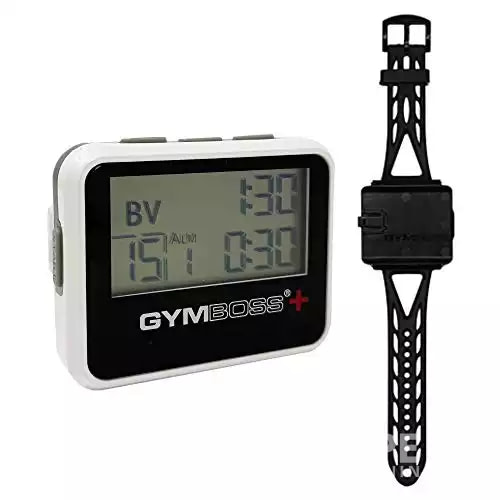

![Apple Watch Series 9 [GPS 41mm] Smartwatch Fitness Tracker, Blood Oxygen & ECG Apps](https://mlrsaszawtm3.i.optimole.com/cb:4PHY.45cbb/w:auto/h:auto/q:90/f:best/ig:avif/https://www.typeatraining.com/wp-content/uploads/2023/10/31xWycYXNmL._SL500_.webp)
